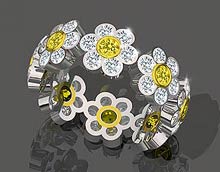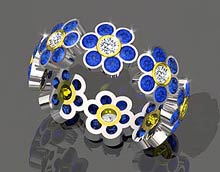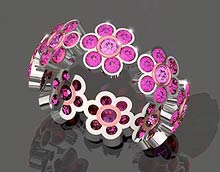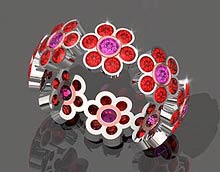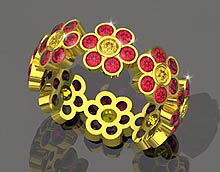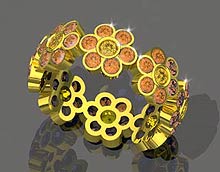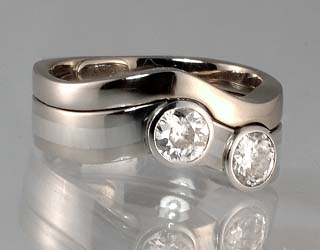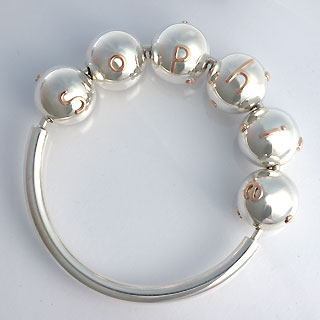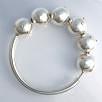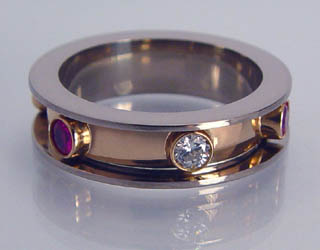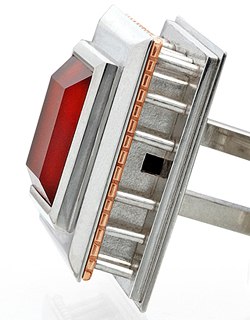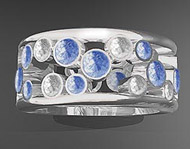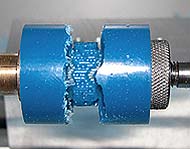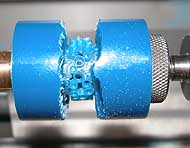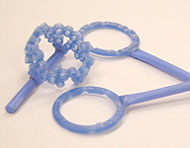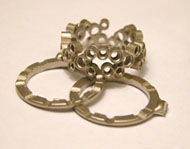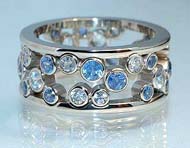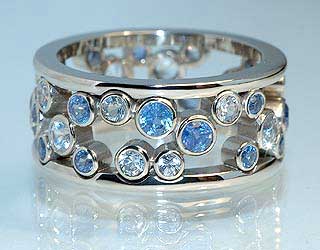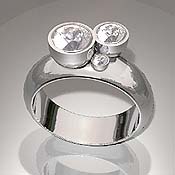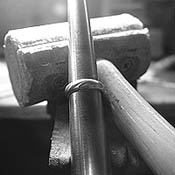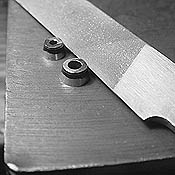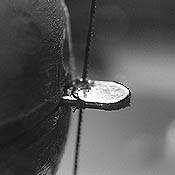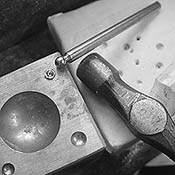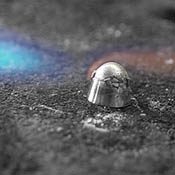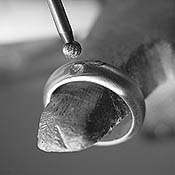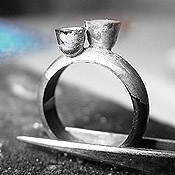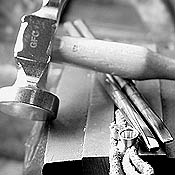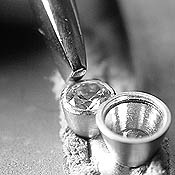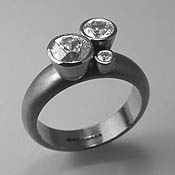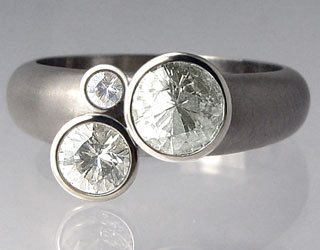Alternative stones for the Daisy ring29 July, 2005A client recently asked what the Daisy ring would look like with different colored stones so I thought I would post these renderings. Here are some CAD renderings of the Daisy ring with different stones. The possibilities are endless.
Julie's ring18 June, 2005
Baby Rattle26 April, 2005
Rotating ring26 April, 2005
House cufflinks10 April, 2005
Creating Janet's ring28 February, 2005This example shows how Janet's ring was made using CADCAM. I designed a number of rings with CAD and sent Janet renderings of the rings from different angles. Designing and making a piece with CAD means that both the person comissioning the piece and I can see exactly how the final piece will look. We have agreed on the precise dimensions of the piece and the renderings give us a good feel for how well the choice of metal and stones will work together.
From this milled wax model they produced a one-off cast of the design in 18k White gold.
Janet's ring20 February, 2005
Creating the 'Three of us' ring29 October, 2004Clients are often interested in how a piece of jewelry is made. My pieces are either made completely by hand from sheet and wire, or a one off cast is made using CADCAM technology. I employ whichever method will give me the highest standard of fit and finish. The following illustrates how the 'Three of us' ring was made by hand from white gold. The 'Three of us' ring was designed with CAD, but fabricated by hand from metal sheet and wire. Here are some pictures of its fabrication.
'Three of us' ring20 October, 2004
Argentium™ Sterling Silver21 January, 2003I read an interesting article on silversmithing.com about a new silver alloy called Argentium. Argentium™ Sterling Silver is a registered and patented alloy developed by trained silversmith and tutor Peter Johns at Middlesex University England.The alloy, unlike standard Sterling Silver is tarnish resistant. Any faint tarnish that may develop can be easily removed with ordinary water and a sponge. The alloy is also resistant to firestain, a purple stain which occurs in Sterling Silver when it is heated during fabrication. Firestain spoils the high shine of a silver object and can take hours to emery away. Sterling Silver is 92.5% silver and 7.5% other metals, usually copper. 100% silver would be too soft to be used for jewelry purposes, so copper is added in order to produce a harder alloy. However the copper within Sterling Silver oxidizes when heated, causing a purple stain just under the surface of the metal. Argentium™ Sterling Silver contains 1.2% Germanium which reduces this purple firestain. For more information on Argentium Silver see www.argentiumsilver.com |
||||||||||||||||||||||||||||||||||||||||||||||||||||||||||||||||||||||||||||||||||||||||||||||||||||||||||||

